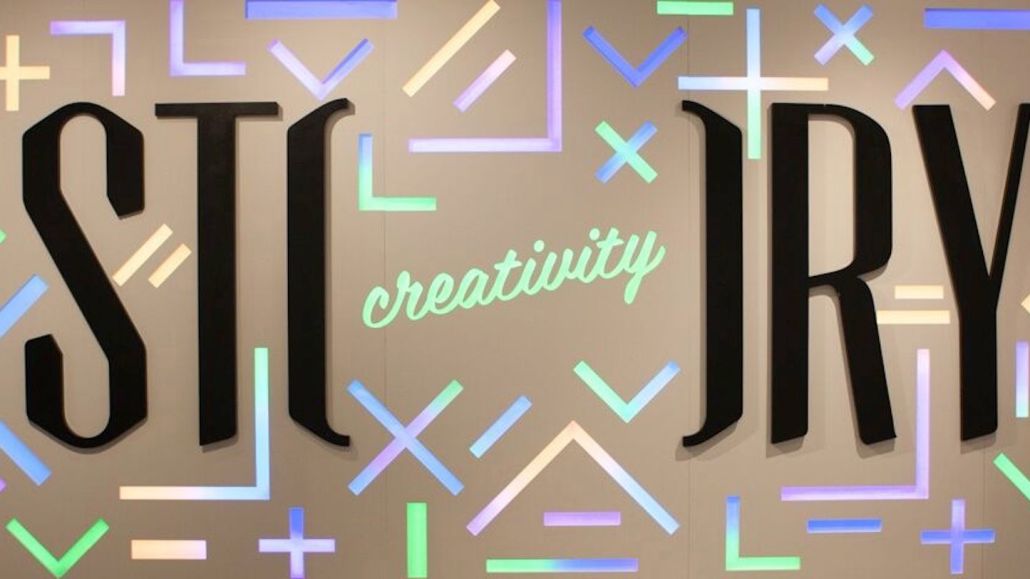Inside Story, the retail store that borrows from magazines and galleries

At Story in the Chelsea neighborhood of New York, visitors can buy things like wooden iPhone cases, dog toys branded by Lucy Liu, and a 3-D printing pen. If you like something you see, it’s best not to wait. Story completely overhauls its inventory every four to eight weeks in order to usher in a new selection, each curated around a changing theme. Today, a new Story — “Creativity” — opens in the shop.
Rachel Shechtman opened Story in 2011 after she came to the conclusion that despite years of digital and tech innovation, physical retail remained largely the same. Her goal was to take the principles of consumer behavior and reimagine them in new ways. The result is Story, a shop Shechtman said “sells things like a retailer, changes like a gallery and has the point of view of a magazine.”
There’s no short supply of niche boutiques in New York that throw around words like “curated selection.” But Story’s big-league play is its partnerships with major brands. Each iteration of Story is sponsored by a brand; how that partnership plays out in the store changes. When Target partook in a “Home for the Holidays” store, a selection of the Story team’s “favorite things” was picked from the retailer’s exclusive brands. Other past partnerships include Dressbarn, for “Her”; Yahoo, for “Well Being”; and Intel, for “Style.Tech.”
Shechtman believes Story gives big companies the ability to act nimble like a startup, citing the Target partnership, which took just eight weeks to execute. It also teases out a more human side of the large, faceless brands by playing up one tug-at-the-heartstrings element of the brand’s story.
“I find that ‘storytelling’ is a term that is very overused these days,” said Shechtman. “For it to be effective, it must be authentic and unique, otherwise it will get buried in all the noise and competition for consumer attention.”
Ad position: web_incontent_pos1
For the current installation, “Creativity,” Story teamed up with the Lexus Design Award, a global contest to identify the next generation of creators. While the sponsoring brand didn’t fill the space with many items to sell, it played into the gallery side of Story: a glass bulb made to look like an unpoppable bubble hangs from the ceiling; an interactive sculpture built by Hush Studio plays music when you run your hand across it.
The space also incorporates the type of digital innovation that Shechtman recognized was missing from the physical industry. The store regularly partners with Perch, an interactive digital design company, to bring displays to life. At the current store, when you pick up a set of designer stamps from the display, the screen behind them flickers on to provide more information via text, photo and video. Story also partners with Prism, a company that uses heat map technology to identify where customers gravitate in a store.
Watch our Snapchat tour of Story below.
Ad position: web_incontent_pos2
Story believes each store is “editorially curated,” as the Letter from the Editor near the entrance suggests, and the corresponding content lives online on the store’s website. Blog posts provide background detailing how the current iteration of the store came to life, like this one about the designer of the Creativity Story wall, LED artist Sachem Arvidson.
While Story is indeed a store, it doesn’t have an e-commerce store or the digital presence of the average retailer. The space is more like a brick-and-mortar representation of brand storytelling, with the inventory as an added bonus. As Shechtman has strong ties to entrepreneurship — she’s a fourth generation entrepreneur — the space hosts regular events that invite startup owners in to pitch products to a panel of professionals.
For the next five weeks, the design and creativity-driven Story collection will be open for business in Chelsea. Check out more photos from the space below.
Lots of color in this section of STORY. #insidetheretailer
A photo posted by Digiday (@digiday) on
A photo posted by Digiday (@digiday) on
More in Marketing

In the marketing world, anime is following in the footsteps of gaming
As marketers look to take advantage of anime’s entry into the zeitgeist, they might be wise to observe the parallels between the evolution of anime as a marketing channel and the ways brands have learned to better leverage gaming in recent years.

With the introduction of video ads and e-commerce, Roblox looks to attain platform status
Roblox is expanding into more areas than just ads in 2024. Much like platforms such as Amazon and Facebook have transcended their origins to evolve from their origins as online marketplaces and social media channels, Roblox is in the midst of a transformation into a platform for all elements of users’ virtual lives.

PepsiCo wants to remain a ‘driver of culture’ as it turns to influencers and activations amid rebrand
The soda-maker says it can translate cultural relevance into sales volume.
Ad position: web_bfu